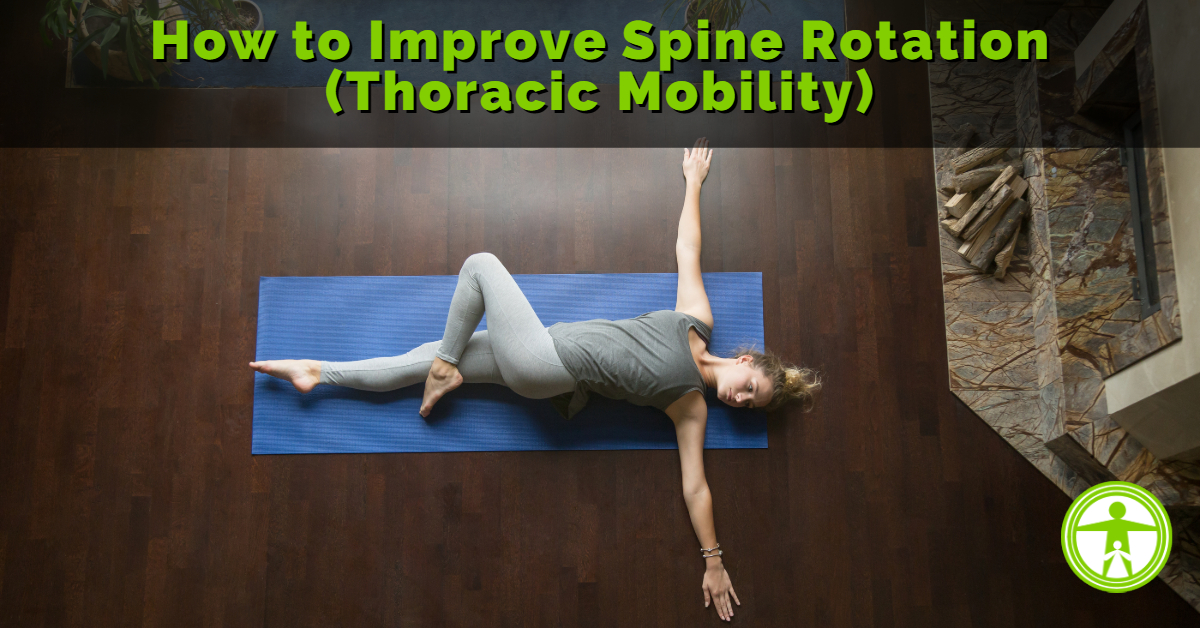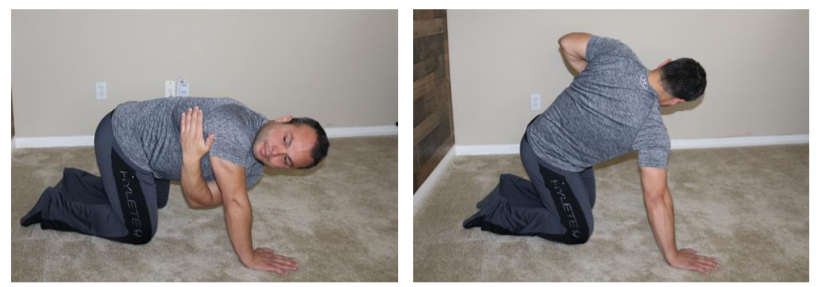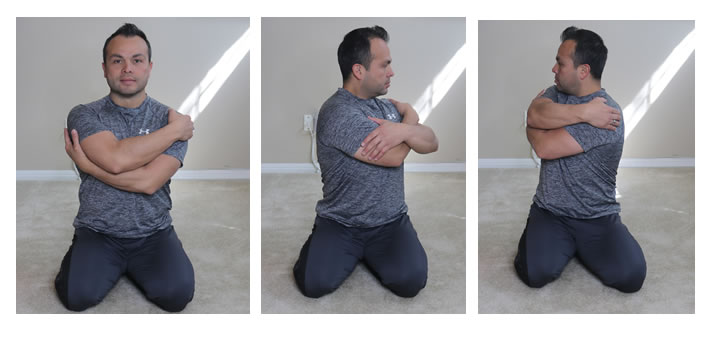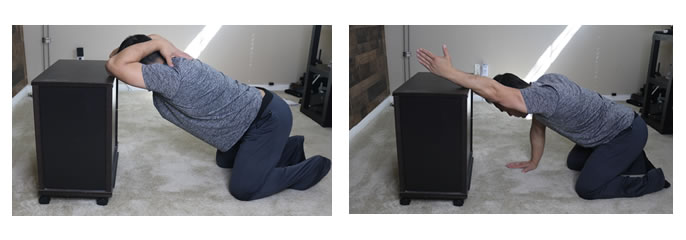Rotation is Important for Optimal Spine Movement
A major benefit of getting weekly Chiropractic Adjustments is ensuring the efficient movement of each segment of your spine.
Movement is one of the pillars of health and having the inability to rotate contributes to injury and pain.
The spine is divided into 3 main sections:
- Your Neck or Cervical Spine
- Your Mid Back or Thoracic Spine
- Your Low Back or Lumbar Spine
Only your thoracic spine (which consists of 12 bones) is designed to rotate significantly. This means if you lack the ability to rotate, it's likely a dysfunction in your thoracic (T-Spine) vertebrae.
Thoracic Dysfunctions can lead to 4 primary issues:
- Poor Posture
- Dysfunctional Upper Body Movements
- Dysfunctional Lower Body Movements
- Dysfunctional Breathing Patterns
If you've been me, you are probably familiar with my 6 Minute Morning Mobility drill. This includes a series of 12 movements that help me to mobilize every major joint in my body.
The entire sequence has importance concepts that begin with extension, then flexion, side-bending and rotation of the spine.
Many people find that they have a hard time rotating their spine.
This is simply because they never put themselves in situations that require it!
Because thoracic spine immobility is so commonplace, people don’t notice that anything is wrong until they need it.
Nearly everyone slumps when they sit, and very few people perform the type of exercises that require full range of motion including rotation.
You can certainly get away with poor mobility if all you’re doing is isolation exercises on machines or worse, never exercising.
But with improved thoracic mobility, you’ll enjoy:
- Lack of kyphosis – That hump back posture we've all seen people suffer from is almost entirely due to poor thoracic mobility.
- A less painful, more stable lower back – Your lumbar spine will be free to provide stability, rather than make up for your lack of mobility.
- More lung volume – Improving mobility and reducing kyphosis actually increases lung capacity!
- Healthier shoulders – No longer will a rounded upper back prevent natural scapular action during overhead movements, thus reducing the chance of rotator cuff impingement.
For a fun (scary) test, exaggerate the round in your upper back; create a real hump, then try to press your arms overhead. Doesn't feel good huh?
- Greater range of motion – By finally engaging your thoracic spine in times of spinal rotation, flexion, and extension (like throwing a ball or a punch), instead of your lumbar spine, you will get stronger, faster, and more explosive in those movements.
Daily Spine Rotation Training
The fourth movement in my daily movement routine consists of spine rotations.
Here's what it looks like:
This is certainly not the only way to work on thoracic spine rotations, but it's part of what I do every single day.
- Start off by getting into a quadruped position (all fours ), on hands and knees.
- From here, place one hand behind the head or on your rib cage, and attempt to rotate just the thoracic spine (mid back).
- Repeat on other side.
If you find that you're struggling or cannot rotate, then consider the following mobility drills or activation exercises to improve your spine rotation.
Sitting Thoracic Spine Range of Motion Exercises
One of the simplest range of motion exercises you can perform is the sitting (or standing) thoracic range of motion exercise.
Start by simply sitting or standing in a neutral position.
Wrap your arms around your body as if hugging yourself and rotate the the left and right side.
Thoracic Extension with a Foam Roller
Start by laying down on a foam roller, placing the foam roller at your mid back.
Place your hands behind your head and let your head fall to the floor and try to wrap yourself around the foam roller, extending the thoracic spine over the roller.
Roll, slowly up and down the vertebrae, pausing on any painful parts (do not roll the neck or lower back, focusing solely on the thoracic spine).
Bench Thoracic Spine Extensions
Another aspect of thoracic spine rotation is being able to extend, allowing the shoulder blades to fully articulate.
This is a pretty simple exercise, but most of you will feel like it's tough.
To start, kneel in front of a bench, box or chair and place your elbows up on the bench about shoulder-width apart.
Kneel far enough from the bench that you have room to sit back and drop your chest through your arms to extend your spine.
Then with your elbows on the bench, sit your butt back and relax your chest and head over, pressing your chest toward the ground so that you feel a nice stretch down your triceps and lats as well as through your thoracic spine.
Try to extend your back as much as possible as you drop your chest toward the ground between your arms. Try to get your biceps by your ears as you extend your spine.
You can either hold here and breathe, relaxing deeper into the stretch as you hold or you can perform repetitions, trying to stretch further each time you repeat the stretch.
In addition, you can try a single arm if both arms are too tight.
Final Thoughts
Use these movements to reverse your rounded posture and forward flexion and improve your Thoracic Extension.
I would advised that you mix things up and play around with various mobility tools and movements that include foam rolling, stretching, activation and strengthening exercises to improve your Thoracic Extension and prevent and alleviate injury!
Here's the deal: no matter how “tight” you may be, there's a lot you can be doing to improve your range of motion, joint health, flexibility and when paired with chiropractic adjustments – improved overall health.







